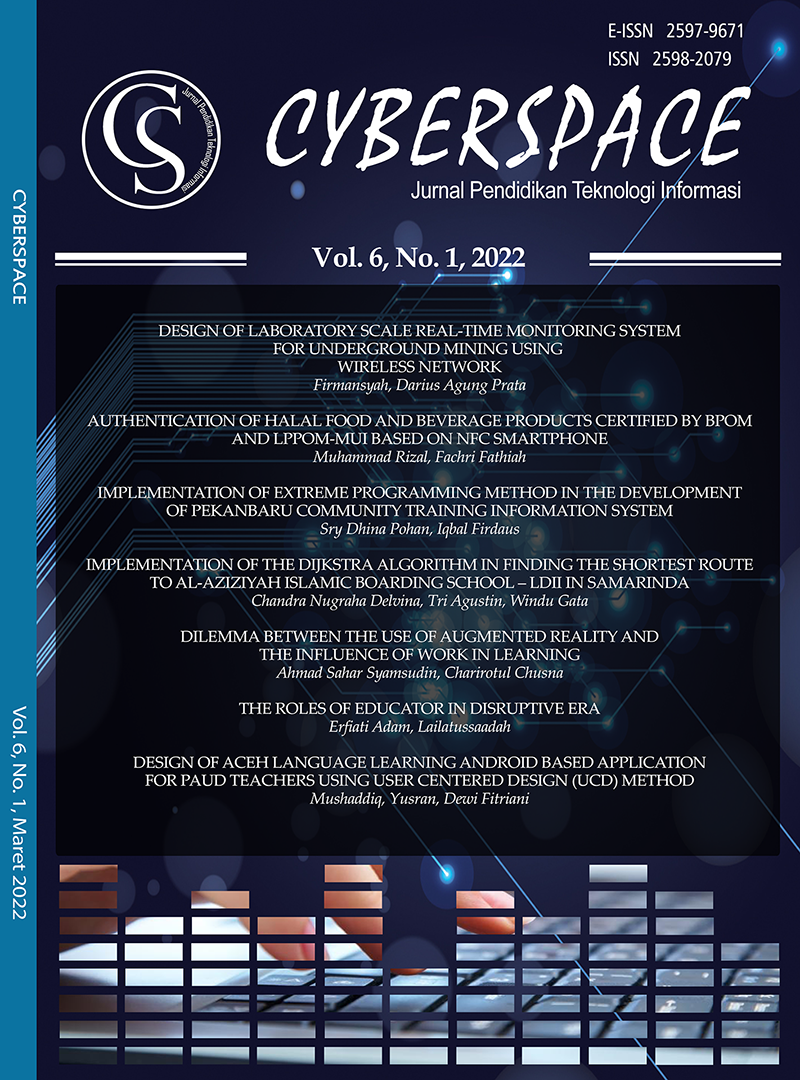DESIGN OF LABORATORY SCALE REAL-TIME MONITORING SYSTEM FOR UNDERGROUND MINING USING WIRELESS NETWORK
DOI:
https://doi.org/10.22373/cj.v6i1.12997Keywords:
Monitoring System, Underground Mining, Wireless NetworkAbstract
Underground mining is one of the mining systems that has a high potential risk of work accidents. One of the potential dangers is the emergence of gasses that can cause disruption of the respiratory system in humans. To minimize this risk, it is necessary to periodically monitor the gas that appears in the work area. This study aims to design a laboratory environmental monitoring system for underground mining using Arduino Uno as a controller that uses sensors of temperature, oxygen, carbon dioxide, and wind speed. Sensor data is sent wirelessly to the main monitoring system with point to point topology. The design of the software is carried out as a place to store data from the sensor which is then displayed in a monitoring information system in real time. From the results of system testing, sensor data is taken in a span of 1 second which is generated by a system with an accuracy rate of 99.9%. Overall, the system can be used properly to real monitor the environmental quality of underground mines.Downloads
Additional Files
Published
2022-03-31
Issue
Section
Articles
License
Authors who publish with Cyberspace Journal agree to the following terms:
- Authors retain copyright and grant the journal right of first publication with the work simultaneously licensed under a Creative Commons Attribution License that allows others to share the work with an acknowledgement of the work's authorship and initial publication in this journal.
- Authors are able to enter into separate, additional contractual arrangements for the non-exclusive distribution of the journal's published version of the work (e.g., post it to an institutional repository or publish it in a book), with an acknowledgement of its initial publication in this journal.
- Authors are permitted and encouraged to post their work online (e.g., in institutional repositories or on their website) prior to and during the submission process, as it can lead to productive exchanges, as well as earlier and greater citation of published work (See The Effect of Open Access).



















